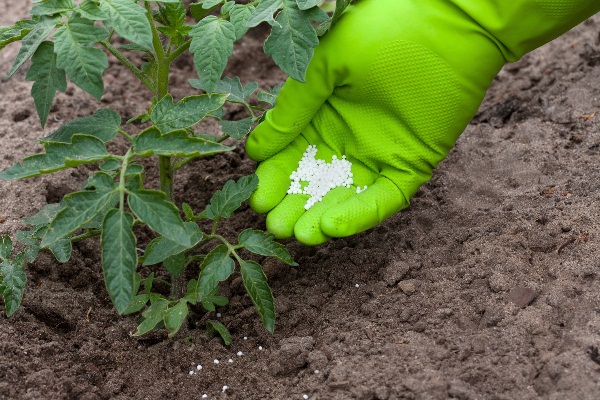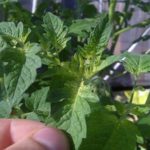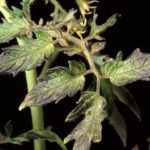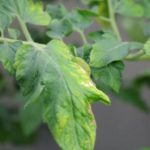Many gardeners have already mastered the technology of growing seedlings at home. Everyone can confirm that better grow bushes of tomatoes from strong and healthy seedlings. Therefore, at the stage of growing young shoots, special attention is paid to fertilizer. In this review, we consider the most popular ways to fertilize seedlings with urea, ash and nettles.
Table of contents
How to understand that tomato seedlings need feeding?
For fertilizing seedlings of tomatoes, ready-made purchased fertilizers are used, which are prepared by the people’s own recipes at home. The composition is selected depending on the objectives: to stimulate the growth of shoots, in order to prevent diseases, to enrich the nutrients that contribute to the normal growing season. To determine the shortage of any micro or macro elements, you just need to look at the plant, it itself gives a hint:
- If felt iron deficiency, the leaves become pale, and the green veins are clearly pronounced.
- With slow growthmost likely not enough nitrogen fertilizers. They will help to restore withering and dried shoots.
- When the appearance of a purple shade, use phosphorus based supplements.
- Leaves turn white and deform more often when calcium deficiency occurs.
- If on fruit dark spots appeared, then most likely the problem is lack of calcium. At the same time spotting on other parts of the plant is absent.
- When you stop the growth of escape There is a lack of magnesium and potassium.
- Signs of iron deficiency in tomato
- The purple color of the leaves of tomatoes indicates a lack of phosphorus
- Signs of calcium deficiency
Useful feed for tomato seedlings in greenhouses and open field
Tomatoes are needed for full growth and abundant fruiting various lures, containing a specific set of trace elements:
- nitrogen;
- potassium;
- phosphorus.
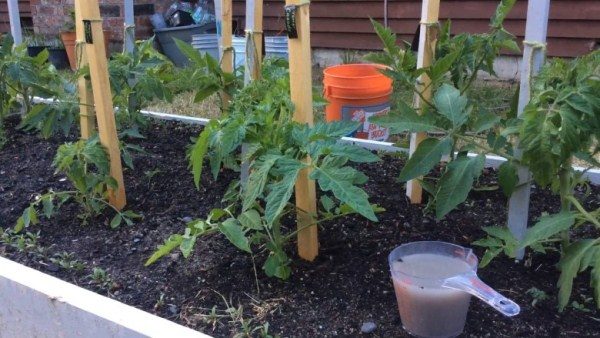
In addition to the main components, complex tools include: calcium, copper, iron, zinc and other substances.
Urea: fertilizer plants after planting
Urea (carbamide) is a white granules. Fertilizer supplies the plant with nitrogen, soil bacteria react with the substance, transforming the main component into ammonium carbonate. The formed product is partially evaporated, which eliminates the effect of accumulation of the compound in the fruit.
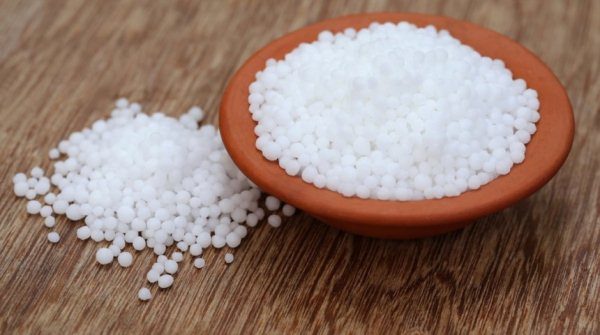
How to use urea when planting a tomato? A feature of the use of urea is soil moistening before dressing. If this is not possible, then the added supplement must be covered with a small layer of soil.Per square meter consumed 10-15 grams. facilities. At cultivation of solutions on a bucket of water add 20-30 gr.
Advantages of urea:
- substance completely soluble in water;
- when properly applied eliminating the accumulation of nitrates in soil and fruits;
- accelerated buildup vegetative mass;
- acts as a means of struggle and prevention from insects and diseases.
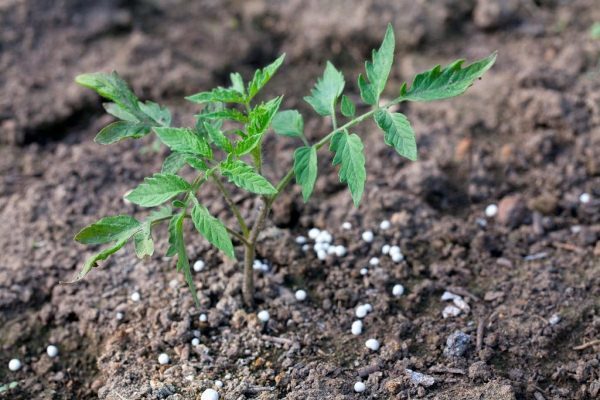
When working with urea should consider some of the nuances:
- for preparation of working solution warm water is used (the reaction during the dissolution reduces the temperature of the liquid, the tomatoes under watering will be subjected to stress);
- a lot fertilizer can burn plants (in order not to damage the shoots, sodium sulphate must be added to the solution).
The use of urea for fertilizing after planting tomatoes is useful because the seedlings are more durable due to the strengthening of the immune system. At an early stage, seedlings are actively increasing the green mass, and the root system is developing well.
Wood ash application
Wood ash is considered one of the most affordable fertilizers, rich in minerals. However, do not use it uncontrollably. To determine the dosage, the type of cultivated crop and the type of soil are taken into account.
The chemical composition of the ash includes the following substances useful for tomatoes: phosphorus, magnesium, potassium, calcium, sodium, etc. Nutritional components play an important role in photosynthesis, increase plant resistance to diseases and pests, contribute to the better development of the root system, prolong the fruiting period.
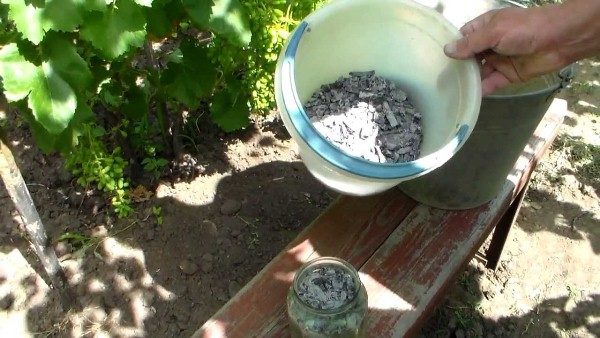
How to fertilize the plant with ashes, how to properly dilute the infusion and water?
Consumption rates:
- for cooking dissolve 200 gr. ash in a bucket of water and insist 1-2 days;
- when spraying 200-300 grams are applied to the soil. on 1 m2;
- for breeding solution on a bucket of water take 100 grams.
The advantages of wood ash:
- affordable and inexpensive way fertilize the beds;
- is used as food and the prevention of certain diseases and pests;
- you can apply in several ways - dusting, spraying, watering at the root;
- security facilities.
The disadvantage is the short-term effect of wood ash-based products; therefore, the procedures and treatments are repeated several times.
Nettle: how to insist and water
Gardeners use nettles along with wood ash and urea to replenish nutrient reserves. Its main advantage is naturalness and safety, which is important for obtaining an environmentally friendly harvest. The burning plant is saturated with nitrogen compounds. The composition is also rich in valuable minerals and trace elements such as: potassium, magnesium, iron, vitamins A, E, B, K, carbon compounds, etc.
The benefits of using tomatoes as fertilizer are as follows:
- stimulates growth young shoots;
- is having tonic effect, increases resistance to diseases and pests;
- destroys aphids in steady hot weather;
- promotes green mass seedlings.
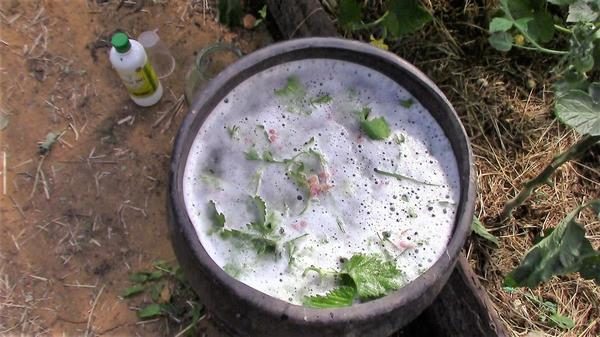
To obtain a good harvest of tomatoes and other crops of the family of nightshadows, it is recommended to combine nettle infusions with the use of mineral fertilizers. The alternation of such dressings will provide tomatoes with all the necessary nutrients.
Advantages of nettle based products:
- soil restoration, enrichment with micronutrient nutrients;
- available raw materials;
- safety of use;
- complex effects on tomatoes.
There are practically no shortages of nettle, unless it is necessary to tinker with collecting herbs and preparing infusions.
Among gardeners, fertilizers for feed based on nettle are very popular. From the most simple, but effective recipes are the following options for infusions.
Recipe number 1
Fill a large container with freshly picked grass and pour cold water over it until the liquid covers it completely. Tara covered with a lid and leave the contents for several weeks (until the moment when the fermentation process begins). At least 2 times a week it is necessary to mix the potion.
High temperature contributes to rapid fermentation, so the tank needs to be installed under direct sunlight. Also, gardeners add fermentation catalysts (yeast or fertilizer Baikal) to the mixture. After the appearance of persistent ammonia aroma and thick foam, the infusion can be supplemented with a sprig of valerian and wood ash. It neutralizes the stench.
End of fermentation is expressed in reduced gas formation and the disappearance of foam. The resulting liquid is filtered through gauze, folded in 2-3 layers. Green fertilizer is diluted with water: for foliar dressing 1:20, for watering 1:10. This solution can feed not only tomato bushes, but also cucumbers, peppers and strawberries.
Recipe number 2
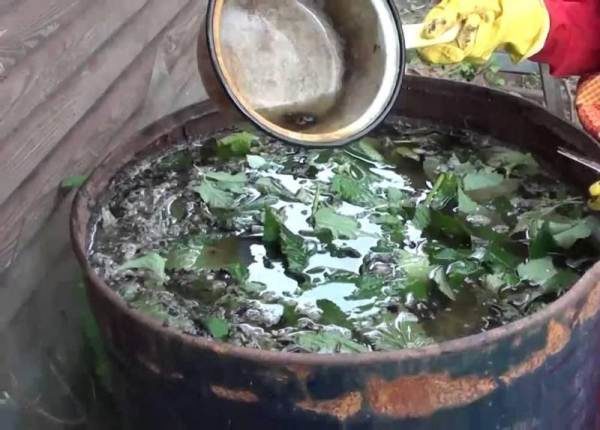
Shredded nettle plants, wormwood, dandelion and yarrow to sleep in a plastic container,fill it with water and cover with a lid on top. Leave for 10 days in the sun. After the start of fermentation add ½ hl yeast and give the infusion to ferment until the formation of bubbles. The resulting liquid is passed through a strainer or gauze layer, diluted with water in a ratio of 1:10.
Recipe number 3
Add crushed green nettle to a non-metallic container, add crushed bread and a bag of dried baker's yeast. Cover with water at room temperature and cover the container with a lid. Later 5 days potion will be ready. After filtering it will be necessary only to dilute the concentrated fertilizer with water in the proportion of 1:10 and water the plants.
There are actually more fertilizer options for seedlings, in the article there are examples of only the most popular and affordable nutrient formulations. For many years of practice growing tomatoes each gardener acquires his own practices and recipes, adapted under certain conditions (for greenhouses or open ground) and varieties.
